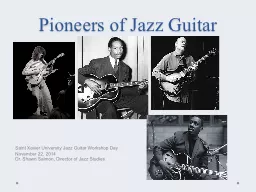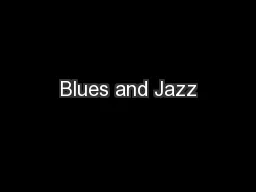PPT-Jazz Guitar 4 Beginners:
Author : tatiana-dople | Published Date : 2018-11-01
Chords amp Scales TCC GG Preparata SCALES amp MODES And Chords amp Onto our Path to Improvisation SCALES MAJOR DIATONIC SCALE That of C par excellence in that
Presentation Embed Code
Download Presentation
Download Presentation The PPT/PDF document "Jazz Guitar 4 Beginners:" is the property of its rightful owner. Permission is granted to download and print the materials on this website for personal, non-commercial use only, and to display it on your personal computer provided you do not modify the materials and that you retain all copyright notices contained in the materials. By downloading content from our website, you accept the terms of this agreement.
Jazz Guitar 4 Beginners:: Transcript
Download Rules Of Document
"Jazz Guitar 4 Beginners:"The content belongs to its owner. You may download and print it for personal use, without modification, and keep all copyright notices. By downloading, you agree to these terms.
Related Documents














